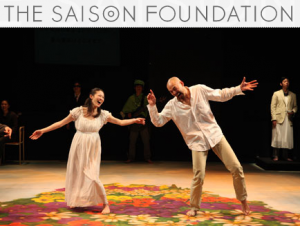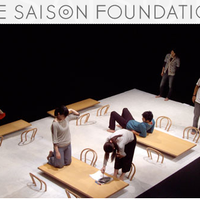Performing arts policy and funding in Europe

[caption id="attachment_2779" align="alignright" width="270" caption="www.saison.or.jp"]
 [/caption]
[/caption]This article was commissioned by the Saison Foundation in Japan for publication in its Viewpoints newsletter 48.
An observer of policies and funding schemes supporting performing arts in Europe finds a highly diverse array of programmes, players, histories and realities. From the 27 European Union Member States to the wider Europe of some 50 countries, all have evolved distinct policies and funding structures within their own cultural, political, historical and economic contexts. Similarities of approach, aims and terminology can be found but there are many more variations.
This article takes an overview of national perspectives for performing arts policy and funding across Europe. It presents recent research identifying trends and current issues and looks at a few countries in depth. The article focuses on public funding schemes, delivered through arts councils, ministries of culture and local authorities, also identifying some key foundations that play an active role.
Information sources
The Compendium of Cultural Policies and Trends in Europe is the first stop for anyone interested in researching European policy and funding programmes. A web-based, permanently updated information and monitoring system of national cultural policies in Europe, the Compendium currently covers 41 countries. This invaluable resource launched in 1998 and has a team of national researchers. It is a joint venture between ERICarts and the Council of Europe.
An excellent source of information specific to the performing arts is the recently published book: State on Stage: The impact of public policies on the performing arts in Europe. Edited by Ineke Hamersveld and Cas Smithuijsen of the Boekman Foundation, Amsterdam, it offers a pan-European overview and national portraits of fifteen EU Member States. “State on Stage tunes in on the relationship between governments and performing arts in European countries over the past fifteen years. This book shows how performing arts professionals manage to combine commercial entrepreneurship with the political skills needed to operate in a government environment.”
Who funds performing arts in Europe?
Public funding comes from central government and local authorities. Each country has its own national body – e.g. Ministry of Culture or Arts Council. In France, Spain, Italy and many countries of Central and Eastern Europe, funding comes direct from the Ministry of Culture, via specialist performing arts departments. In the United Kingdom, Ireland and Nordic countries such as Finland, Denmark and Norway, an Arts Council is responsible. Arts Councils were conceived as a type of ‘arm’s length’ executive body with independent decision-making procedures separate from government, although their true independence has been questioned in some countries in recent years.
There is added complexity in European countries with federal or other regional structures. In Germany, the 16 federal states (Länder) assume political responsibility for funding culture, each with their own funding programmes and policies. Belgium has distinct territorial regions and linguistic communities, each with separate structures to support culture, in the Flemish, French and much smaller German-speaking Community. In the United Kingdom, there are separate Arts Councils for England, Scotland, Wales and Northern Ireland.
Although the national level is the most prominent, local authorities are generally credited overall as the major contributors to the cultural sector, far exceeding ministries and other sources. Local authorities vary from one European country to another in their structure, distribution, political and economic significance. In some countries local authorities are minor performing arts funders while, in others, they far exceed central government funding. Regional theatres are often owned and managed by local authorities. Many cities and regions are renowned for their high arts investment. In Spain, while central government funds national arts organisations, more funding for performing arts is at regional level from the 17 Autonomous Communities (e.g. Catalonia, Aragon).
Recent trends
State on Stage identifies some interesting trends which have emerged in Europe since the early 1990s. Authors Cas Smithuijsen and Joris Vermeulen describe “diminishing dualism”. After the fall of the Berlin Wall in 1989 and the emergence of post-Communist countries of Central and Eastern Europe, there was a clear distinction between the large, state-funded theatres of the former Eastern bloc countries (with little opportunity for the independent sector) and the more varied artistic panorama of Western European countries with established national venues and companies as well as a thriving smaller, experimental and independent sector.
From 1992 – 2007 there has been slow reform in post-Communist countries and the integration of many Central and Eastern European countries and the Baltic States into the European Union. Commercial entertainment and private sponsorship has arrived on the Eastern European performing arts scene. Big state theatre institutions have been restructured and funding support is now open to the independent non-profit sector. The former divide between Eastern and Western systems is dissolving. State on Stage contributors from Bulgaria, Hungary, Estonia, Slovenia and Romania report an “overall tendency to provide more extensive support to experimental ‘fringe’ artists”. Nevertheless reforms are often too gradual for the young, articulate generation of independent artists and companies who confront highly centralised public administrations with inflexible policies and programmes.
Other issues identified by State on Stage include:
- Differences between state and market – growing market orientation and mixed funding
- Centralisation, decentralisation and regionalisation
- Imposed reflection: a constant need to engage with new economic, educational and social viewpoints of state, region, municipal and private funds
- Education and participation: declining audiences in some countries and the need to engage with multicultural societies and communities.
Flanders: a flourishing garden but some clouds on the horizon?
In Belgium the competencies for culture reflect territorial regions and linguistic communities. In Flanders, the northern part of Belgium, culture is funded by the Flemish Government through the Department of Culture, Youth, Sport and Media. This is legislated by a parliamentary act, the Arts Decree, passed in 2004 and implemented in 2006. The Arts Decree followed earlier important legislative mechanisms, the 1993 Performing Arts Decree and 1975 Theatre Decree.
The Arts Decree (Arts Flemish Parliament Act) aims at an integrated approach for all professional arts fields and provides an open, coherent and sustainable framework for the support of all art forms in Flanders. Funding is allocated in different strands:
- four-year and two-year operational grants
- project grants (for organisations and individuals)
- bursaries for individual artists
- international organisations based in Flanders
The four-and two-year structural funding covers running costs for organisations such as theatres, festivals, arts centres and artistic companies. International work, a regular activity for many performing arts organisations in Flanders, is considered part of the normal work programme. Five national level organisations – Flemish opera, ballet company, two orchestras and De Singel (international ‘art campus’ in Antwerp) receive dedicated funding under the Arts Decree.
According to State on Stage, public funding of culture in Flanders has increased substantially since 1999 and former Culture Minister Bert Anciaux was set to achieve his objective of doubling the culture budget over a ten year period. Nevertheless, the current situation for performing arts funding in Flanders raises certain concerns. Supply and demand is a basic problem – the performing arts sector has burgeoned over recent years with the creation of many new companies. Flanders is a hotbed of international talent with several prominent artists and companies from elsewhere choosing to establish there. It is interesting to note that the evaluation experts have yet to make the difficult decision (seen recently in England and the Netherlands) to cut funding to older or less well-performing companies in favour of new talent. Experienced observers note that the funding may now be spread too thinly between too many organisations.
With a recent new government in Flanders, there are also uncertainties about future policy and budgets. The pluri-annual operational grants now take the lion’s share of the budget and there is a large funding commitment until 2012. It looks likely that the small budgets for projects, bursaries and international organisations will be further squeezed.
Ann Olaerts, Director of the VTI (Flemish Theatre Institute), acknowledges that performing arts organisations in Flanders have been “living in a good situation” and that the Arts Decree is a well-developed instrument. But she feels that the future holds less certainty: “The huge challenge is how to cope with the enormous productivity of the performing arts sector”. The system needs to find a way to incorporate new companies and artists, funded at a level that allows them to flourish and grow.
Alongside the Flemish Government, some local government funding in Flanders exists at provincial and city level for infrastructure and projects. But in general this is a minor part of the performing arts funding landscape. Foundations are not at all developed in Flanders, nor is sponsorship in the performing arts.
It is therefore quite feasible that an important performing arts organisation in Flanders with a full and active programme might make only one funding application every four years to obtain sufficient running costs. Such a situation is quite inconceivable in most European countries where a similar venue, company or festival would have several permanent staff for fundraising, sponsorship and other income-generation.
Ann Olaerts reports “a big discussion about alternative financing models” in the performing arts sector. Most companies have not worked on this at all but there is an interest in new co-financing mechanisms. Could it be that those innovative and rational creators, policy-makers and thinkers of Flanders might come up with a radical 21st century complementary funding system to shake up the performing arts world?
Italy – tradition over innovation and criticisms of poor decision-making
In Italy, government funding for performing arts comes from MIBAC (Ministry for Cultural Heritage and Cultural Activities) through a special fund established in 1985 under Italian law. The FUS (Fondo Unico per lo Spettacolo – Sole Fund for Performance) applies to performing arts (theatre, music, dance) and cinema, in a particular Italian definition of performing arts.
In 2009, the FUS budget was € 398m – an historic all time low. Prior to 2006, there was over € 500m in the FUS budget and the budget has progressively decreased since the 1990s, reflecting the Italian government’s lack of commitment to the performing arts as well as recent economic pressures.
FUS is distributed as annual operating grants. Performing arts organisations in Italy must apply each year and multi-annual funding is not an option. Almost half the FUS funding (47.5%) goes, by law, to 13 ‘lyrical establishments’ – the main opera houses and classical theatres, e.g. La Scala, Milan. With 18.5% of FUS allocated to cinema, only 34% is left for the rest of the performing arts, divided mainly between theatre, music and dance. Dance only gets a tiny allocation – 2.25%, and the position of contemporary dance in Italy is very precarious.
FUS comes in for much criticism - the diminishing budgets (now less than in 1985, when inflation is taken into account), over-commitment to traditional lyric/musical arts at the expense of contemporary performing arts and, in particular, a lack of transparent decision-making. The performing arts newspaper, Il Giornale dello Spettacolo, has regular reports on protests at the announcement of the FUS budget and grants.
The sector is highly critical of the fact that almost all grants deliver an unofficial form of regular funding. Up to 80% of grants go to the same organisations, year after year, with minimal opportunity for new venues and companies to get into the FUS system. Most theatre funding goes to the ‘Teatro Stabile’, a group of 17 important theatres (a type of national theatre at regional level) with fairly traditional programmes. Innovation is barely funded at state level and the huge majority of funding goes to maintain the status quo, albeit at a constantly reduced level.
Further evidence of poor decision-making by the current government was the so-called ‘Patto Stato Regioni’. Launched in 2007 with an annual budget of € 20m, it offered three-year grants for regional contemporary performing arts programmes. Each region presented a three-year project and bid for a share of the budget. However, the government cancelled the third year’s budget, causing the cancellation of projects by many festivals and emerging artists.
A 2008 Aedon journal article by Professor Luca Zan of Bologna University, makes other observations. FUS applications are assessed on purely quantitative criteria (e.g. number of performances) and quality is not evaluated, in spite of calls for qualitative assessment criteria. It is seen as a rigid and rather non-transparent funding mechanism. Reductions in the budget over the years have penalised small organisations far more than larger ones. Decision-making on the FUS allocation is very slow: e.g. in 2009 annual grants had not yet been announced in July (due to cover the period January – December 2009). This creates major problems in planning, accountancy and cash-flow for performing arts organisations in Italy.
Thankfully for performing arts organisations in Italy, the local authority level of funding is relatively well developed, although this still remains heavily weighted to traditional forms of performing arts. Authorities at regional, provincial and municipal level together provide far more funding for performing arts than the FUS. This creates more possibilities as well as imbalances across the country due to wealthier public authorities in prominent cities able to fund theatres and cultural institutions at a better level than poorer, more rural regions.
Foundations play a prominent role in funding culture in Italy although many are suffering budget reductions because of the financial crisis. Since 1992, foundations attached to banks have become important financers of culture. By law, banks and savings institutions must allocate a percentage to culture through an independent foundation structure. Each city and region has its own bank and financial foundations which tend to invest locally. For example, the Compagnia di San Paolo is an important Turin foundation, financed through the Instituto Bancario San Paolo, and funds culture in and around the city. Often these institutions follow the same funding patterns as the municipalities. Thus, although local and foundation funding offers some prospects for the younger, innovative performing arts companies, in reality, most of the funding also goes to support the traditional and established cultural institutions.
Portugal – infrastructure challenges and new touring networks
In Portugal the Direcção-Geral das Artes, a central service of the Ministry of Culture, takes responsibility for state funding of the performing arts. National policy in the performing arts includes the creation of a network of performing arts venues that operate according to certain quality criteria and develop sustainable collaborations.
Portugal has a particular challenge associated with its theatre infrastructure. Across the country, many theatres were built or refurbished with EU structural funding that flowed into the country in the ten years from the late 1990s after Portugal joined the European Community. Municipal authorities provided matching funding for EU grants. Although this temporarily created a magnificent infrastructure, funding for programming and professional management capacity did not follow the capital investment. Many theatres became seen as personal projects associated with the ambitions of local politicians. Used for amateur and community events, they did not find adequate audiences and revenues for a regular professional programme. Many of these refurbished theatres have since closed down due, in part, to an excess of supply over demand.
There are significant partnerships between municipalities and central government with more funding for performing arts coming from the city level. Currently, the goal is for the main regional capitals to have a theatre and establish a touring network. A specific annual touring programme, Territorio Artes, offers incentives for theatres and town councils to network and work together booking performances with a ‘credibility seal’ (i.e. companies that are funded/approved by DGArtes) in order to raise the quality of work presented.
Most of the DGArtes funding is distributed to companies and independent artists as one-year, pluri-annual and project grants, although some 98% of funding is distributed as pluri-annual structural support. Many in the sector feel that maintaining the status quo is the priority and there is little investment in innovation.
Foundations play a significant role in the cultural landscape in Portugal. The Calouste Gulbenkian Foundation continues its important cultural role in Portugal after more than 50 years activity. It has its own orchestra, choir and concert hall in Lisbon, as well as smaller venues and an open air amphitheatre. The former Gulbenkian Ballet Company was closed in 2005. A programme of support for dance (PAD) was then set up to fund infrastructure, research, organisational development and internationalisation of the dance sector (one-off expenses rather than creation or running costs). The Gulbenkian offers various grants for theatre, scholarships, music commissions and runs an active education programme.
Serralves Foundation in Oporto has some performing arts activity as part of its contemporary visual arts programme, such as the Mugatxon international partnership with residencies in dance and performance.
Supply and demand – a recurrent issue
The emergence of the cultural industries in Europe, growth of festivals, increased professionalisation in the performing arts, attractive graduate and post-graduate arts courses that turn out ever more qualified artists all point to one thing: a strong increase in demand for arts funding. At the same time some countries have invested in culture and increased budgets while others have seen a decline.
In England, the Arts Council faced a major crisis in 2007 when it gave short notice of funding cuts to 200 arts groups, including many major performing arts organisation, in order to free up funding for new organisations. The adverse public and professional reaction caused a review of the policy and in the end only a few of the threatened organisations were cut. In 2009 in the Netherlands, grants were cut from 59 structurally funded organisations (some 40%) to make it possible to fund 34 new organisations. Funders everywhere face such challenges in order to make space for innovation and the next generation.
The current economic crisis places culture budgets in competition with essential public services. At the same time, many foundations are reducing their grants due to financial losses and low interest rates. Future prospects for the funding supply to meet the demand from the performing arts sector appear more uncertain than ever before.
And yet, one notes a certain buoyancy and confidence in the work being presented in Europe, especially in festivals, along with a new creative energy generated by these interesting, fast-changing times. The challenge for performing arts professionals and funders seems to be to keep one’s nerve, to concentrate on core activity and to keep the antennae finely tuned to both social context and global environment.
The article is also available in Japanese at:
http://www.saison.or.jp/viewpoint/pdf/09-09/viewpoint-no.48.pdf
Further information: www.saison.or.jp
References
Europe/International
Compendium of Cultural Policies and Trends in Europe www.culturalpolicies.net
ERICarts – European Institute for Comparative Cultural Research www.ericarts.org
The Council of Europe www.coe.int
IETM – international contemporary performing arts network www.ietm.org
ENICPA – European Network of Information Centres for the Performing Arts www.enicpa.net
State on Stage, The impact of public policies on the performing arts in Europe, Boekmanstudies/VSCD in connection with Pearle*Amsterdam/Brussels, 2008, (Editors: Ineke Hamersveld and Cas Smithuijsen), ISBN/EAN 978-90-6650-091-4, http://www.boekman.nl/EN/index.html
IFACCA D’Art report 27: Major Performing Arts Organisations: a Review of the Issues for Funding Agencies, June 2009, http://media.ifacca.org/files/D%27Art27MPA.pdf
Belgium: Flanders
Flemish Government: Department of Culture, Youth, Sport & Media www.cjsm.vlaanderen.be
Arts Flemish Parliament Act (Arts Decree) www.cjsm.vlaanderen.be/cultuur/tekstbestanden/arts_flemish_parliament_act.pdf
Flemish Theatre Institute www.vti.be
Finland
Finnish Theatre Information Centre www.teatteri.org
Finnish Dance Information Centre www.danceinfo.fi
Ireland
Arts Council / An Chomhairle Ealaion www.artscouncil.ie
Italy
MIBAC – Ministero per i Beni e le Attivita Culturali www.beniculturali.it
Giornale dello Spettacolo www.giornaledellospettacolo.it
AEDON – article on funding of performing arts by Luca Zan et al., www.aedon.mulino.it/archivio/2008/2/zan.htm
Compagnia di San Paolo www.compagnia.torino.it
Portugal
Direcção-Geral das Artes www.dgartes.pt
Calouste Gulbenkian Foundation www.gulbenkian.pt
Serralves Foundation www.serralves.pt
United Kingdom
Arts Council of England www.artscouncil.org.uk
Scottish Arts Council www.scottisharts.org.uk
Arts Council of Wales www.artswales.org.uk
Arts Council of Northern Ireland www.artscouncil-ni.org
Clore Duffield Foundation www.cloreduffield.org.uk
Genesis Foundation www.genesisfoundation.org.uk
Jerwood Foundation www.jerwood.org
Paul Hamlyn Foundation www.phf.org.uk
Acknowledgments: thanks to Maria de Assis (Portugal), Federico Borreani, Massimo Mancini & Graziano Melano (Italy), Ann Olaerts & Joris Janssens (Flanders), Juncal Aparisi Molina (Spain) and Mary Ann de Vlieg (IETM) for advice and information.
© 2009 Judith Staines
Judith Staines is a writer and researcher based in England who specialises in European cultural cooperation and international mobility issues. She has worked on projects for European cultural networks such as IETM, is currently Editor of the performing arts international mobility website www.on-the-move.org and was researcher for the International Foundations and Networks initiative in 2008. She is author of a handbook on mobility of cultural goods between Russia and the EU and practical guides for visual artists in the UK.
Similar content
posted on
12 Oct 2009
from - to
17 Feb 2015 - 17 Feb 2015
posted on
02 Dec 2013
posted on
29 Aug 2012
deadline
09 Sep 2011





